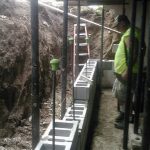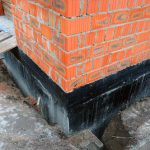Tips for Pouring Concrete in Cold Weather
Pouring concrete can be a bit challenging in the cold weather. There isn’t any sort of special concrete antifreeze solution to prevent it from freezing up. Instead, it’s water that you need to use to help concrete set in the winter. Implementing water causes heat of hydration, which in turn prevents freezing from occurring.
Here’s what you need to know about navigating the challenges of pouring concrete in cold weather, with the help of a concrete contractor in Racine, WI.
What to know about pouring concrete in the cold
Here in Wisconsin, winter sometimes seems to last half the year. While it’s ideal to get your concrete pouring jobs done in the summer months, that’s not always practically feasible, so cold-weather concrete pouring might be your only available option.
You may already know that temperature plays a large and important role in the strength of concrete and its long-term usability. You need to get the right mix of concrete for the cold temperatures that hit the state from the late fall through the early spring.
Beyond just the concrete itself, it’s important to know the techniques that must be applied to install the concrete properly when the mercury dips lower and lower. A drop of 20 degrees Fahrenheit can, in some cases, double the amount of time it takes for the concrete to set, and that becomes especially problematic when you get below 40 degrees Fahrenheit. The good news is you can overcome this challenge by adjusting the mix of your concrete based on the conditions you’re dealing with.
On the manufacturing end, the plant will heat up everything that comes into contact with the concrete, so it can remain at a relatively stable temperature while being transported to the job site (as much as possible, anyway; expect about a 25 percent temperature drop per hour of transportation). Companies often have large, heated water tanks on site to ensure you can continue to refresh the warmth of the concrete while working with it.
The recipe of the concrete you’re working with is also important to take into account. The right ingredients can make a big difference in your concrete results. For example, you can use setting accelerators and water-reducing additives to help out when the weather gets cold, and you can take extra steps to avoid fly ash or slag cement, as those types of cements set slowly and do not generate as much internal heat.
Accelerators are one of the most common additives, because they speed up the setting time to allow for faster curing, which helps you to avoid frost damage. The colder the weather, the more important these accelerators can be to the installation process.
If you’re interested in learning more about the challenges associated with pouring concrete in cold weather and the steps you should take to protect your installation and avoid any potential frost damage, contact the concrete contractors in Racine, WI at Langenfeld Masonry & Concrete with any questions. We look forward to working with you!
More...
Categorised in: Concrete Contractor




